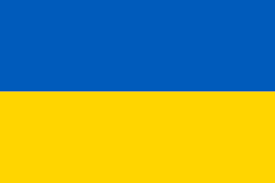 Economics of the War in Ukraine
Economics of the War in Ukraine
Block Seminar: June 23 -- 24, 2023
Location: Friday: VG 1.102; Saturday: OEC 1.163
Kickoff Meeting: April 18; time: 2:15pm, room: VG 0.110
Submission of application form: until April 25
Submission of seminar paper: until June 4
Final Prep-Meeting: tba
Supervision: Dr Johannes Schünemann: email Matthias Beulmann: email
Seminar Info: info
Application Form: studip
Course material for participants is available at the course material webpage
Introduction
In this master seminar, we discuss journal articles and recent working papers on the economics of war in general and on the war in Ukraine in particular. Due to the topicality of the issue the list of the seminar themes is tentative and will likely be updated until mid April.
Themes
1. War, Peace, and the Size of Countries
Reference: Alesina, A., & Spolaore, E. (2005). War, peace, and the size of countries. Journal of Public Economics, 89(7), 1333-1354.
2. War and Relatedness
Reference: Spolaore, E., & Wacziarg, R. (2016). War and relatedness. Review of Economics and Statistics, 98(5), 925-939.
3. Nation-building, Nationalism, and Wars
Reference: Alesina, A., Reich, B., & Riboni, A. (2020). Nation-building, nationalism, and wars. Journal of Economic Growth, 25(4), 381-430.
4. An Economic Theory of Alliances
References: Olson, M., & Zeckhauser, R. (1966). An economic theory of alliances. The review of economics and statistics, 266-279.
Kim, W., & Sandler, T. (2020). NATO at 70: pledges, free riding, and benefit-burden concordance. Defence and peace economics, 31(4), 400-413.
5. Collateral damage: Trade disruption and the Economic Impact of War.
Reference: Glick, R., & Taylor, A. M. (2010). Collateral damage: Trade disruption and the economic impact of war. The Review of Economics and Statistics, 92(1), 102-127.
6. The Economics of Targeted Sanctions
Reference: Ahn, D. P., & Ludema, R. D. (2020). The sword and the shield: The economics of targeted sanctions. European Economic Review, 130, 103587.
7. The Trade Impact of the Russia Sanctions and Counter-Sanctions.
Reference: Crozet, M., & Hinz, J. (2020). Friendly fire: The trade impact of the Russia sanctions and counter-sanctions. Economic Policy, 35(101), 97-146.
8. Sanctions and the Exchange Rate
Reference: Itskhoki, O., and Mukhin, D. (2022). Sanctions and the exchange rate (No. w30009). National Bureau of Economic Research.
9. Economic Sanctions as Terms-of-trade Manipulation
Reference: Sturm, J. (2022). A theory of economic sanctions as terms-of-trade manipulation. Mimeo, MIT.
10. The Economic Effects for Germany of a Stop of Energy Imports from Russia
Reference: Bachmann, R., Baqaee, D., Bayer, C., Kuhn, M., Löschel, A., Moll, B., ... & Schularick, M. (2022). What if? The economic effects for Germany of a stop of energy imports from Russia (No. hal-03881469).
11. The long-run educational cost of World War II.
Reference: Ichino, A., & Winter-Ebmer, R. (2004). The long-run educational cost of World War II. Journal of Labor Economics, 22(1), 57-87.
12. The long-run effects of large-scale physical destruction and warfare on children
Reference: Akbulut-Yuksel, M. (2014). Children of war: The long-run effects of large-scale physical destruction and warfare on children. Journal of Human resources, 49(3), 634-662.
13. Can external threats foster a European Union identity? Evidence from Russia’s invasion of Ukraine
Reference: Gehring, K. (2022). Can external threats foster a European Union identity? Evidence from Russia’s invasion of Ukraine. The Economic Journal, 132(644), 1489-1516.
14. Kleptocracy and Divide-and-Rule: A Model of Personal Rule
Reference: Acemoglu, D., Verdier, T., & Robinson, J. A. (2004). Kleptocracy and divide-and-rule: A model of personal rule. Journal of the European Economic Association, 2(2-3), 162-192.
15. A Theory of Informational Autocracy
Reference: Guriev, S., & Treisman, D. (2020). A theory of informational autocracy. Journal of Public Economics, 186, 104158.